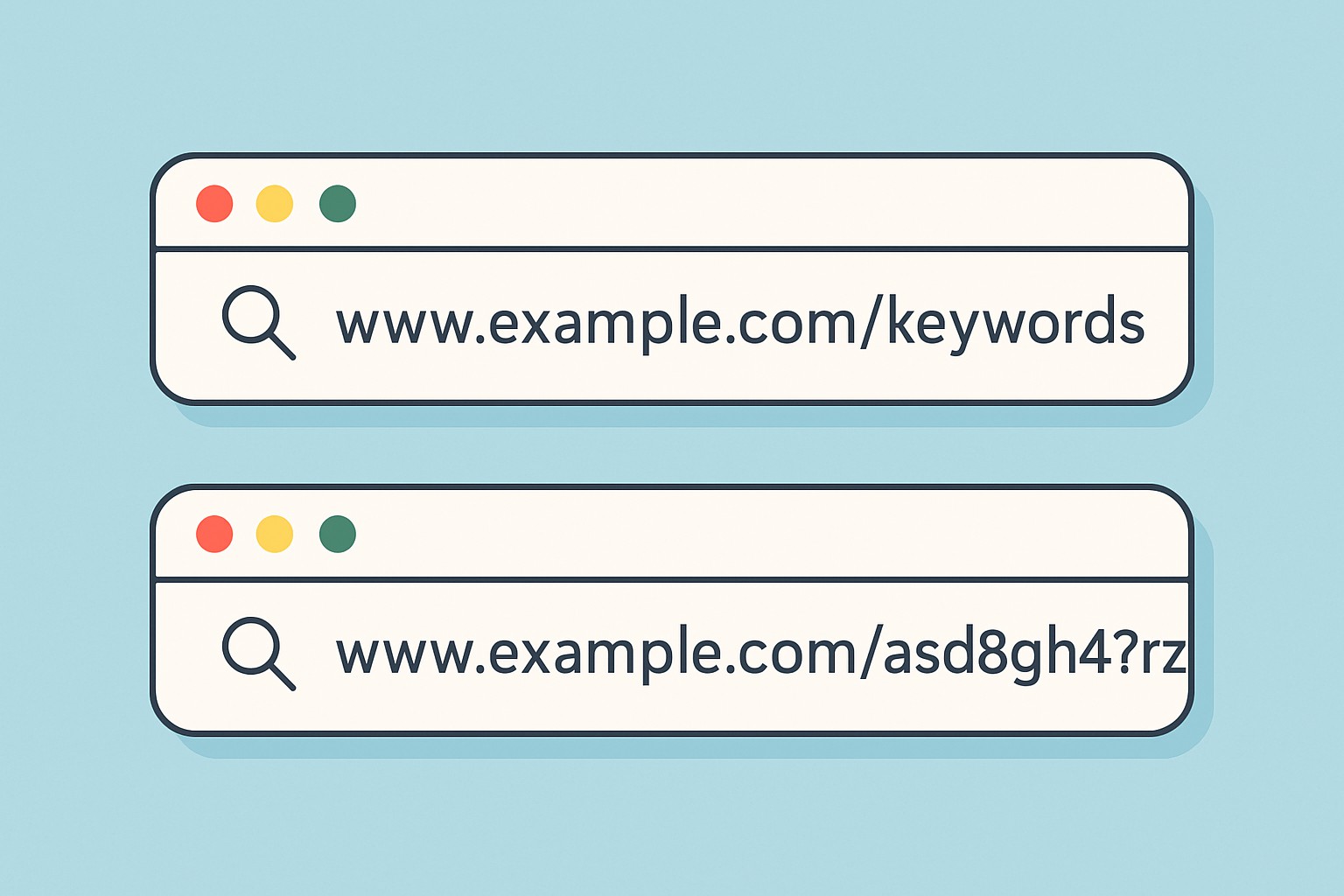
Are contextual link building services worth it?
Explore whether contextual link building services are a smart investment for your SEO strategy with...

Web friendly URLs are a big deal in web development and SEO but their true purpose and benefits can sometimes feel fuzzy. We break down what web friendly URLs really are and why they matter so much. We also explain how they can boost both user experience and search engine rankings.
A URL or Uniform Resource Locator is basically the web address that guides you around the internet. Think of it as an address or a trusty map that points your browser to the exact spot where a webpage, image or file is hiding.
The protocol is the language two people use to chat, like English or Spanish—it’s what gets them on the same page. The domain name is like a street address that points you exactly to the house to visit. Meanwhile, the path is your friendly guide that leads you to the exact room inside that house. Query parameters are the little extra notes or special instructions you might want to pass along.
Web friendly URLs are web addresses crafted to be easy on the eyes and simple to grasp. They swap out pesky random characters for clear straightforward words, making life easier for individuals surfing the web and search engines that sift through site content to figure out where to rank you.
These URLs cut through the usual maze of complicated numbers and symbols that tend to baffle users and sometimes leave search engines scratching their heads. Instead, they lean into simplicity using clear keywords and a no-nonsense structure.
These features give users a friendly nudge to recognize and remember URLs more easily, often nudging them toward more clicks and sharing.
Web friendly URLs do more than just tidy up the look of your site. They make life easier for your visitors by providing clear and straightforward paths. They also play nicely with search engines and give your SEO a helpful boost.
A clear and logical street address is like a trusty map that helps visitors find a house without wandering aimlessly. Similarly, web-friendly URLs act as straightforward signposts, guiding both users and search engines straight to the right web page—no confusion, no unnecessary detours, just smooth sailing all the way.
Many individuals often jump to the conclusion that SEO hinges mostly on how long a URL is, or that messy URLs loaded with parameters are just the norm for some sites. Some swear by underscores being better than hyphens, while others think switching up URLs all the time is no big deal.
SEO generally plays nicer with URLs that are short and to the point but it’s definitely not just about cramming in keywords wherever you can. Tossing in too many irrelevant or excessive URL parameters tends to confuse both users and search engines because nobody likes a cluttered address bar. Some parameters are necessary and can be managed if handled correctly. When it comes to separators, hyphens usually come out on top over underscores since search engines see hyphens as clear word breaks. This makes URLs much easier on the eyes. Also, constantly switching up your URLs without proper redirects causes broken links and a dip in rankings.
Crafting URLs that are easy on the eyes (and browsers) isn’t just a nice-to-have—it’s a must. Think of your URL as your website’s street address; you want visitors to find you without getting lost. Simple, clear, and straightforward always wins the day. Let’s dive into some tips that can turn your URLs from a headache into a smooth sailing experience.
You can whip up web-friendly URLs yourself or let modern content management systems do the heavy lifting, as they often take care of URL formatting behind the scenes.
Choose clear and descriptive keywords that nail the main topic of the page. Think of them as your headline’s best friend.
Keep URLs concise by trimming unnecessary words and complex bits that weigh things down.
Use hyphens to separate words because it makes URLs easier on the eyes and gives a nice SEO boost.
Skip stop words like "and", "or" and "the" and avoid special characters since they clutter things more than you’d like.
Always stick to lowercase letters to sidestep headaches with case-sensitive servers that can be picky.
Keep a consistent URL format across your site. It’s like giving your visitors a friendly familiar map to follow and keeps everything organized.
Jazz it up to something snappier like /red-leather-wallet instead of sticking with a plain old URL like /product?id=12345. Content management systems such as WordPress or Drupal usually make it straightforward to customize those URL slugs so you can follow these best practices without breaking a sweat.
| Example URL | Description | Why It Is/Is Not Web Friendly |
|---|---|---|
https:\/\/example.com\/product?id=12345&ref=789 | URL packed with long-winded query parameters and mystery IDs | Not web friendly: a bit of a headache to read and even tougher to remember |
https:\/\/example.com\/products\/red-leather-wallet | Clear, keyword-rich URL that tells you exactly what’s inside | Web friendly: short, sweet, and a breeze to follow |
https:\/\/example.com\/blog\/2020\/12\/31\/post-title | Includes date and a neat, descriptive slug for the blog | Web friendly: nicely organized and simple enough to navigate without breaking a sweat |
https:\/\/example.com\/article_923834.html | Uses random numbers and underscores that just add to the confusion | Not web friendly: confusing, clunky, and not very user-friendly |
https:\/\/example.com\/shop\/summer-sale?offer=20 | Contains a query parameter that’s a bit vague and mysterious | Not web friendly: a bit messy and tougher to read |
https:\/\/example.com\/shop\/summer-sale | Simple, clean path with no extra fluff | Web friendly: clear as day and right to the point |
The friendly URLs in these examples really shine by sticking to simple, straightforward words that give you a clear snapshot of what the page is all about. This little trick helps users get a solid sense of the content before they even take the plunge and click. They wisely avoid confusing codes or a jumble of parameters, which often make URLs seem fishy or clumsy to share.

Visual comparison highlighting differences between web friendly and non-friendly URLs
There are quite a few handy tools and resources that make creating and analyzing URLs smoother on the web. URL slug generators often take the grunt work out of crafting keyword-rich URLs and let you focus on the fun part. Meanwhile, SEO audit tools don’t just point out problems in your URL structure—they offer practical suggestions to fix them.
Sticking to these guidelines usually does the trick for keeping your website both user-friendly and search engine optimized as time goes on. Clear, steady URLs not only build trust with your visitors but also make site management a whole lot easier letting you steer clear of pesky issues like broken links and unexpected dips in rankings.
14 articles published
Driven by a passion for unlocking the potential of digital spaces, Quintessa Crenshaw combines cutting-edge strategies with a human-centric approach, empowering businesses to thrive in the ever-evolving digital landscape.
Read Pages
Explore whether contextual link building services are a smart investment for your SEO strategy with...

Elevate your video marketing with expert-driven tips and a comprehensive checklist designed to optim...

Unlock top affiliate earnings in the investment niche by promoting high paying programs like Semrush...

Discover how publishers can harness content marketing strategies step-by-step to boost engagement, d...